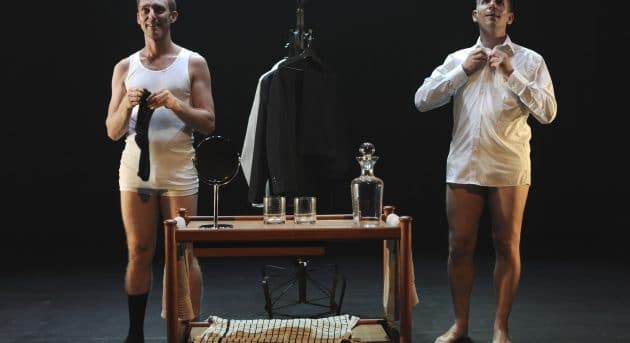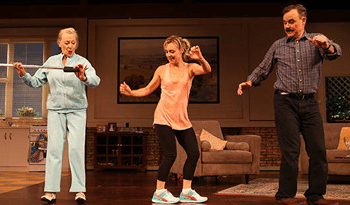Review: Songs not to Dance to, Riverside
Choreographer-dancers Martin del Amo (Sydney) and Phil Blackman (Lismore) collaborated on Songs not to dance to after an exchange program that brought together metropolitan and regional dance creators.
Exploring “notions of compatibility / incompatibility, connection / disconnection and congruity / incongruity”, their performance is strange—and wonderful.
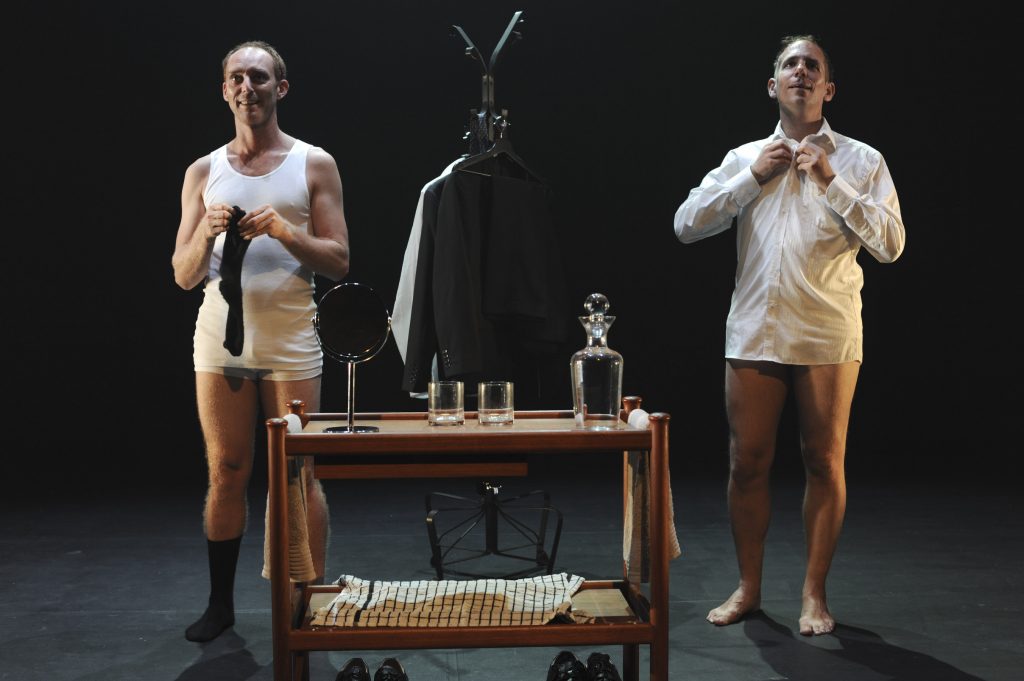
As the show opens, the stage suggests an old-fashioned gentlemen’s dressing room, with a varnished wooden trolley, double-sided mirror and decanter of water. There are, too, glasses of coloured liquid—looking suspiciously like Berocca—which the dancers gulp down. When the two men finish dressing for the evening—tying ties, polishing shoes, spritzing fresh-breath spray—they put on grey suit coats.
The first dance section begins with the men side by side, facing the audience. To a heavily orchestrated version of ABBA’s The Way Old Friends Do, they make repeated small movements, simple quarter turns. Facing each other, facing away from each other, to the back, to the front—they present all possible combinations. The “dance” is severely minimalist; so little “happens” that it becomes hypnotically beautiful.
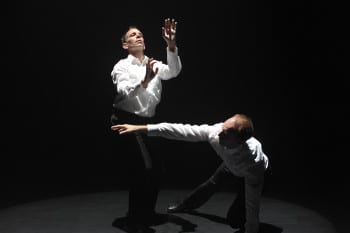
Other sections are different. To songs by Whitney Houston or Christina Aguilera or stark clavichord pieces from Keith Jarrett’s Book of Ways, one or both men dance with deliberate and endearing awkwardness. Toes point in. Wrists droop. Hips are angled strangely. Arms move in weird convulsive waves. Their movements are often slow and controlled—which has a disorienting impact when the music is Eminem’s Not Afraid.
The two different types of dance alternate, but the men’s faces are deadpan. They are so serious that surely they are joking. Aren’t they? They maintain their “dignity” even as they take off their braces, their coats, their shirts. One even takes off his trousers. They put their clothes back on again. At “half time”, they hand out orange segments to the audience.
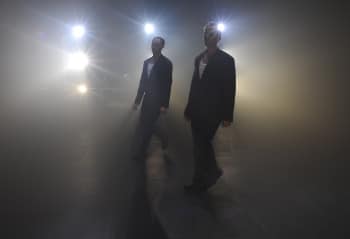
And through it all, Karen Norris’ lighting design for the evening is stunning, multiplying the repeated movements, creating misty moods or humorous effects.
If I had to pick one word to describe this performance, I would chose “integrity”. We are forced to wait as the minimalist segments take their own sweet time, right to their properly meditative ending. Stillness is taken very seriously, as is silence. And, equally, movement—whether polished, balletic and beautiful, or strained, awkward, unbeautiful—is celebrated as profoundly human.
The final event of the evening was an impromptu dance by audience volunteers. Their challenge was to dance to an unknown tune that had been voted “a song not to dance to” by previous audience members. When the music started, they threw themselves into uninhibited and ridiculous dancing. They looked as if they were having a ball, and it was certainly a delight to watch.
While some (or perhaps all) the volunteers had dance backgrounds, it seemed to me that Blackwell and del Amo’s performance had granted them the freedom to embrace their own endearing awkwardness—as if dancing awkwardly is an act of vulnerability and therefore builds courage and trust.
If anyone wasn’t sure how to interpret the performance, there it was: just embrace your own ridiculousness.
This performance is part of Form Dance Projects 2015, fostering dance culture in Western Sydney.

